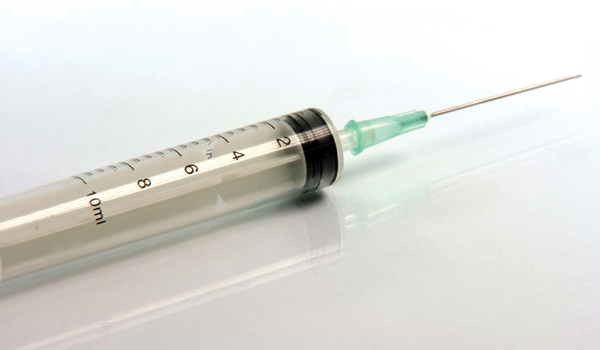
Ebola Treatment May Be On the Horizon (Op-Ed)

Jeff Nesbit was the director of public affairs for two prominent federal science agencies. This article was adapted from one that first appeared in U.S. News & World Report. Nesbit contributed the article to LiveScience's Expert Voices: Op-Ed & Insights.
U.S. Army medical researchers may have found an emergency treatment for the deadly Ebola virus, which is welcome news to biodefense researchers studying ways in which such hemorrhagic fever viruses jump from non-primate species to human beings and how to treat them.
Using antibodies derived from specially engineered tobacco plants, Army medical researchers were able to develop a treatment that provided complete protection for monkeys shortly after they were exposed to Ebola.
But more importantly and promising, the treatment helped even after Ebola symptoms had developed, according to the study in Science Translational Medicine.
"Ebola virus (EBOV) remains one of the most lethal transmissible infections and is responsible for high fatality rates and substantial morbidity during sporadic outbreaks. With…the reported possibility of airborne transmission, EBOV is a high-priority public health threat for which no preventive or therapeutic options are currently available," the researchers wrote. The treatment "demonstrates efficacy as a therapeutic (after the onset of symptoms). Of the treated animals, 43 percent survived challenge [and] represent successful therapy of EBOV infection" in non-human primates.
The potential Ebola treatment resulted from vaccine tests begun in mice — specifically to develop monoclonal antibodies engineered to recognize Ebola. Researchers at the U.S. Army Medical Research Institute of Infectious Diseases (USAMRIID) then chose three of them to combine and test in monkeys infected with Ebola. In the test, 43 percent of the monkeys infected with Ebola recovered and survived, even after they'd been infected with Ebola up to five days and were starting to show symptoms.
The treatment, known as MB-003, protected 100 percent of monkeys when it was administered within an hour after Ebola exposure, said the study's lead author, James Pettit of USAMRIID. Two-thirds of the monkeys were protected when treated within 48 hours of being exposed to Ebola.
Get the world’s most fascinating discoveries delivered straight to your inbox.
"By requiring both a documentable fever and a positive... result for Ebola infection before initiating treatment in these animals, we were able to use MB-003 as a true therapeutic countermeasure," a second study author, Gene Olinger, also of USAMRIID, said in a statement. "These initial results push the threshold of MB-003 from post-exposure prophylaxis to treating verified illness."
Higher doses of the antibody combination might work even better. While the emergency treatment would need to be given intravenously, non-governmental groups working in Africa near Ebola outbreaks would have the ability to deliver it. And though it may be awhile before anyone tests the potential treatment on humans, it at least offers hope in the event of an emergency outbreak.
While it originated in non-human primates, various strains of Ebola have been found in humans for decades. Depending on the strain, the virus is fatal in up to 90 percent of patients with Ebola. There's no existing treatment, and no vaccine — which is why researchers have been working to identify antibody combinations that might lead to either a treatment or a vaccine.
As I wrote about last winter, biodefense researchers are especially worried about viruses like Ebola that are capable of "jumping species" from non-human primates like chimpanzees to human beings.
Deadly, virulent viruses have jumped species at least three times: the SIV virus that almost certainly led to the worldwide AIDS pandemic; the SV-40 "cancer" virus that was accidentally included in polio vaccines in the 1950s; and the deadly Ebola virus .
Researchers are also looking at the remote possibility some day of another species jump: simian hemorrhagic fever virus (SHFV), which could prove more deadly and untreatable than Ebola, or it could be the key to unlocking cures for such species-jumping viruses.
A PLOS One study in 2011 found SHFV in wild primates not in captivity, which substantially upped the stakes on research about whether it could jump species like Ebola. SHFV virus is uncharacterized — which means that we know virtually nothing about its origin, virulence, how treatable it is, its path of transmission or whether it will kill us like Ebola should it jump species.
The way potentially deadly viruses such as SHFV or Ebola are transmitted is one of the most closely watched areas of infectious disease research on the planet. For instance, researchers have reported that the Ebola virus could be transmitted from pigs to monkeys without any direct contact — raising the specter that Ebola could somehow mutate into an airborne virus.
So the news out of USAMRIID that a handful of monkeys were successfully treated up to five days after they were infected with Ebola is welcome indeed. If Ebola does, in fact, become an airborne virus, it's great to know that there might be a potential emergency treatment on the horizon.
A version of this column appeared as "Ebola Treatment May Be On the Horizon"on the blog At the Edge by Jeff Nesbit on U.S. News & World Report. His most recent Op-Ed was "Alien Life on Europa? Funding Gap Means We May Never Know." The views expressed are those of the author and do not necessarily reflect the views of the publisher.
